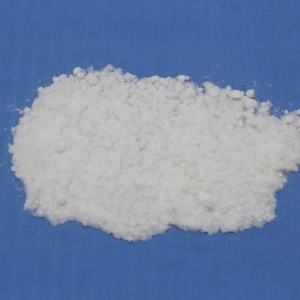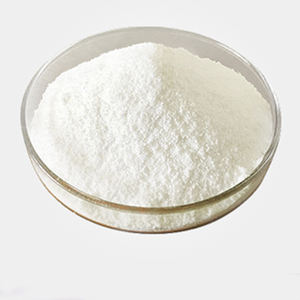1. Product Principles and Morphological Advantages
1.1 Crystal Framework and Chemical Structure
(Spherical alumina)
Round alumina, or round aluminum oxide (Al two O FIVE), is a synthetically produced ceramic product characterized by a distinct globular morphology and a crystalline framework predominantly in the alpha (α) stage.
Alpha-alumina, one of the most thermodynamically steady polymorph, includes a hexagonal close-packed setup of oxygen ions with aluminum ions occupying two-thirds of the octahedral interstices, causing high lattice power and remarkable chemical inertness.
This stage shows outstanding thermal security, keeping integrity as much as 1800 ° C, and resists reaction with acids, alkalis, and molten metals under a lot of commercial problems.
Unlike uneven or angular alumina powders originated from bauxite calcination, round alumina is crafted with high-temperature procedures such as plasma spheroidization or fire synthesis to accomplish uniform satiation and smooth surface area texture.
The makeover from angular precursor fragments– often calcined bauxite or gibbsite– to thick, isotropic balls gets rid of sharp edges and inner porosity, boosting packing efficiency and mechanical sturdiness.
High-purity grades (≥ 99.5% Al ₂ O TWO) are important for digital and semiconductor applications where ionic contamination have to be minimized.
1.2 Bit Geometry and Packing Habits
The defining attribute of spherical alumina is its near-perfect sphericity, normally evaluated by a sphericity index > 0.9, which considerably affects its flowability and packing density in composite systems.
In contrast to angular fragments that interlock and produce spaces, spherical fragments roll past each other with marginal rubbing, allowing high solids filling throughout formula of thermal user interface materials (TIMs), encapsulants, and potting substances.
This geometric uniformity allows for optimum academic packing densities surpassing 70 vol%, much exceeding the 50– 60 vol% common of irregular fillers.
Greater filler packing straight equates to boosted thermal conductivity in polymer matrices, as the continuous ceramic network provides efficient phonon transport paths.
Additionally, the smooth surface area decreases wear on handling tools and lessens viscosity surge during mixing, improving processability and diffusion security.
The isotropic nature of balls also prevents orientation-dependent anisotropy in thermal and mechanical residential or commercial properties, making sure consistent efficiency in all directions.
2. Synthesis Methods and Quality Assurance
2.1 High-Temperature Spheroidization Techniques
The production of spherical alumina mainly relies upon thermal approaches that thaw angular alumina fragments and permit surface tension to reshape them right into balls.
( Spherical alumina)
Plasma spheroidization is the most widely utilized commercial approach, where alumina powder is injected into a high-temperature plasma flame (up to 10,000 K), creating instantaneous melting and surface area tension-driven densification into best rounds.
The molten droplets strengthen swiftly during flight, forming dense, non-porous particles with uniform size distribution when combined with accurate category.
Alternate techniques consist of flame spheroidization utilizing oxy-fuel lanterns and microwave-assisted home heating, though these normally supply lower throughput or much less control over bit dimension.
The starting product’s pureness and fragment dimension distribution are important; submicron or micron-scale forerunners yield correspondingly sized rounds after processing.
Post-synthesis, the item undertakes extensive sieving, electrostatic splitting up, and laser diffraction analysis to ensure tight particle dimension distribution (PSD), normally ranging from 1 to 50 µm depending upon application.
2.2 Surface Area Adjustment and Practical Tailoring
To enhance compatibility with organic matrices such as silicones, epoxies, and polyurethanes, round alumina is typically surface-treated with combining agents.
Silane coupling agents– such as amino, epoxy, or vinyl practical silanes– kind covalent bonds with hydroxyl groups on the alumina surface while providing organic performance that communicates with the polymer matrix.
This treatment boosts interfacial adhesion, lowers filler-matrix thermal resistance, and prevents cluster, leading to even more homogeneous composites with premium mechanical and thermal efficiency.
Surface area finishings can additionally be crafted to give hydrophobicity, enhance dispersion in nonpolar materials, or enable stimuli-responsive habits in wise thermal materials.
Quality control includes dimensions of BET area, faucet thickness, thermal conductivity (generally 25– 35 W/(m · K )for dense α-alumina), and impurity profiling using ICP-MS to omit Fe, Na, and K at ppm levels.
Batch-to-batch consistency is crucial for high-reliability applications in electronic devices and aerospace.
3. Thermal and Mechanical Efficiency in Composites
3.1 Thermal Conductivity and Interface Design
Spherical alumina is mostly employed as a high-performance filler to boost the thermal conductivity of polymer-based materials utilized in electronic packaging, LED illumination, and power components.
While pure epoxy or silicone has a thermal conductivity of ~ 0.2 W/(m · K), packing with 60– 70 vol% round alumina can increase this to 2– 5 W/(m · K), sufficient for efficient warm dissipation in compact tools.
The high innate thermal conductivity of α-alumina, incorporated with very little phonon spreading at smooth particle-particle and particle-matrix user interfaces, enables reliable heat transfer via percolation networks.
Interfacial thermal resistance (Kapitza resistance) stays a restricting variable, but surface functionalization and maximized dispersion strategies aid minimize this barrier.
In thermal user interface products (TIMs), round alumina reduces get in touch with resistance between heat-generating components (e.g., CPUs, IGBTs) and heat sinks, preventing overheating and extending tool life expectancy.
Its electrical insulation (resistivity > 10 ¹² Ω · cm) guarantees safety in high-voltage applications, identifying it from conductive fillers like metal or graphite.
3.2 Mechanical Stability and Integrity
Past thermal efficiency, round alumina enhances the mechanical toughness of composites by increasing firmness, modulus, and dimensional stability.
The round shape disperses tension evenly, reducing fracture initiation and proliferation under thermal cycling or mechanical load.
This is particularly vital in underfill products and encapsulants for flip-chip and 3D-packaged gadgets, where coefficient of thermal development (CTE) inequality can generate delamination.
By readjusting filler loading and particle dimension circulation (e.g., bimodal blends), the CTE of the composite can be tuned to match that of silicon or published circuit card, lessening thermo-mechanical anxiety.
In addition, the chemical inertness of alumina avoids destruction in damp or harsh atmospheres, ensuring long-lasting integrity in automotive, commercial, and outside electronic devices.
4. Applications and Technological Advancement
4.1 Electronics and Electric Lorry Systems
Round alumina is a crucial enabler in the thermal administration of high-power electronic devices, consisting of shielded gate bipolar transistors (IGBTs), power materials, and battery monitoring systems in electrical vehicles (EVs).
In EV battery packs, it is included into potting compounds and stage change products to avoid thermal runaway by equally dispersing heat throughout cells.
LED producers use it in encapsulants and secondary optics to maintain lumen outcome and shade uniformity by reducing joint temperature level.
In 5G facilities and information centers, where warm change densities are climbing, round alumina-filled TIMs make certain stable operation of high-frequency chips and laser diodes.
Its function is expanding into innovative packaging technologies such as fan-out wafer-level packaging (FOWLP) and embedded die systems.
4.2 Emerging Frontiers and Sustainable Advancement
Future advancements concentrate on hybrid filler systems combining round alumina with boron nitride, light weight aluminum nitride, or graphene to achieve synergistic thermal performance while keeping electrical insulation.
Nano-spherical alumina (sub-100 nm) is being checked out for transparent porcelains, UV finishes, and biomedical applications, though obstacles in diffusion and expense remain.
Additive manufacturing of thermally conductive polymer composites making use of round alumina allows facility, topology-optimized warm dissipation structures.
Sustainability efforts consist of energy-efficient spheroidization processes, recycling of off-spec material, and life-cycle evaluation to reduce the carbon impact of high-performance thermal products.
In summary, spherical alumina stands for an important crafted product at the crossway of porcelains, composites, and thermal scientific research.
Its one-of-a-kind mix of morphology, purity, and efficiency makes it essential in the recurring miniaturization and power intensification of modern digital and energy systems.
5. Vendor
TRUNNANO is a globally recognized Spherical alumina manufacturer and supplier of compounds with more than 12 years of expertise in the highest quality nanomaterials and other chemicals. The company develops a variety of powder materials and chemicals. Provide OEM service. If you need high quality Spherical alumina, please feel free to contact us. You can click on the product to contact us.
Tags: Spherical alumina, alumina, aluminum oxide
All articles and pictures are from the Internet. If there are any copyright issues, please contact us in time to delete.
Inquiry us

